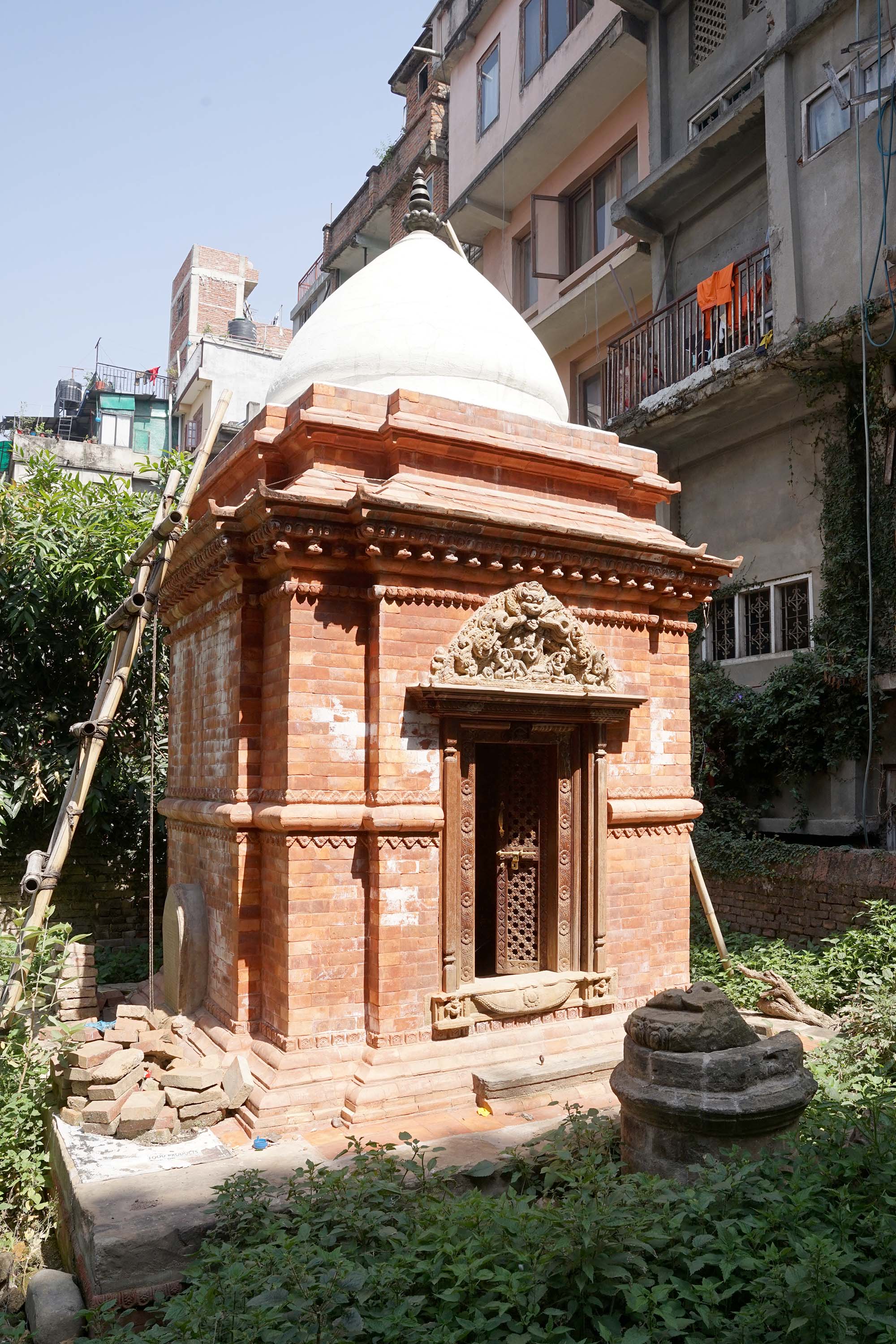Vaṃśagopāla Mandira
Curated by Pabitra Bajracharya

Vaṃśagopāla Mandira (DANAM ID: LAL0350), is currently being reconstructed by the local municipality. The Rajopādhyāya priests of Lalitpur are divided into six groups, including the Mahādyaḥnani (Valānimha), whose 15 families have an Āgamaghara in Mahādyaḥ Nani, south of the road from Purṇacaṇḍi Pokharī. East of this courtyard, near the Rāmeśvara Mahādeva temple, stands the rebuilt Kṛṣṇa temple. Already dilapidated before the 2015 earthquake, the temple collapsed and remained in ruins for decades. Reconstruction began in 2080 BS with municipal funding, featuring a brick dome. The main Kṛṣṇa statue, stolen around the 1980s, left only its pedestal, while the original stone toraṇa was preserved and an old Garuda statue still stands without a base. An inscription states that Śrīnātha Rājopādhyāya built the temple in 1643 CE (NS 763) and endowed land as guṭhī for rituals. The same priestly lineage serves at Patan’s main Kṛṣṇa temple, and locals believe the builder, once a priest at that main temple, used leftover materials from King Siddhi Narasiṃha Malla’s larger Kṛṣṇa shrine, constructed six years earlier.
